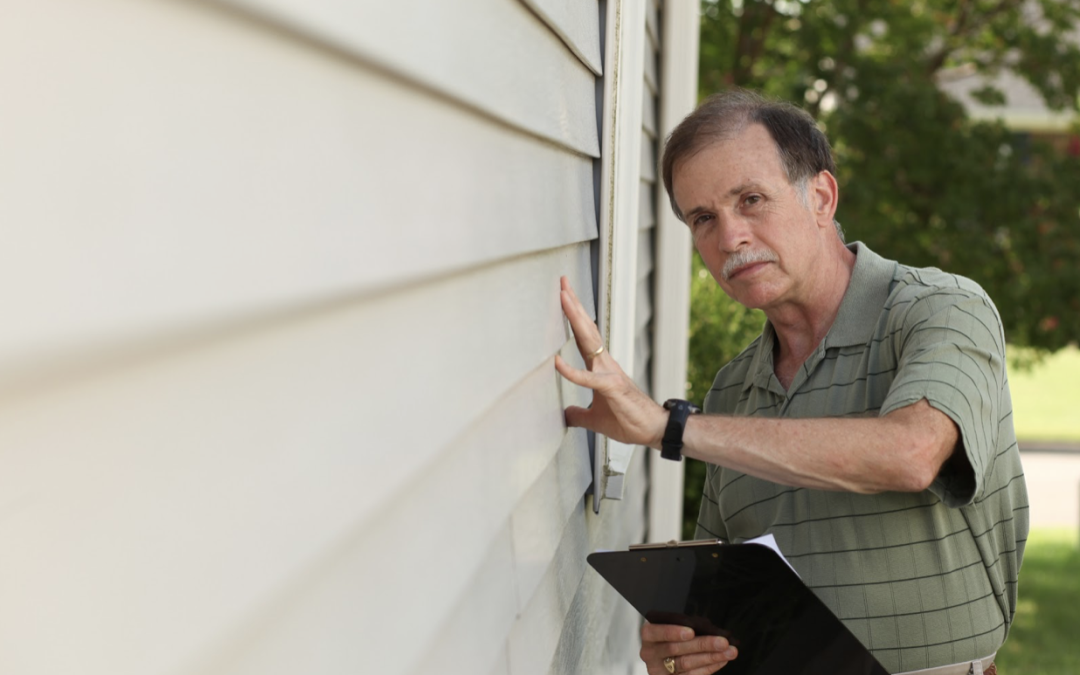Severe weather can unleash its fury, leaving behind a trail of destruction that affects your home’s roof and siding. Whether it’s a relentless summer storm with torrential rain and hail or a winter tempest with snow and ice, your roof and siding play a pivotal role in safeguarding your family and possessions. But what do you do once the storm subsides? In this comprehensive guide, we’ll lead you through the essential steps to evaluate and rectify roof and siding damage caused by severe weather.
Types of Weather That Can Cause Roofing and Siding Damage
Your home’s exterior faces a wide range of weather conditions throughout the year. Here are some common types of weather that can lead to damage:
Hailstorms: Hail can be particularly destructive, causing dents, cracks, and granule loss on roofing materials. Siding can also suffer from impact damage during severe hailstorms.
Heavy Rain: Prolonged heavy rain can lead to water infiltration through compromised roofing or siding. This can result in leaks, water stains, and even structural damage if left unaddressed.
High Winds: Strong winds can lift and displace shingles or siding panels. Loose or missing shingles can expose your roof to further damage, while siding that has been torn off or damaged can compromise your home’s insulation.
Snow and Ice: Accumulation of snow and ice on your roof can lead to ice dams, which can cause water to seep under roofing materials. This can result in leaks and, in extreme cases, structural damage.
Freezing Temperatures: Subzero temperatures can lead to the expansion and contraction of roofing materials, which can weaken them over time. Similarly, freezing temperatures can cause siding to become brittle and crack.
Extreme Heat: Prolonged exposure to extreme heat can cause roofing materials to deteriorate, leading to cracking and warping. It can also affect the integrity of siding materials.
Tornadoes and Hurricanes: The high winds associated with tornadoes and hurricanes can cause extensive damage to roofing and siding, including tearing off entire sections.
Understanding the types of weather-related risks your home faces can help you better prepare for potential damage and take proactive steps to protect your roof and siding.
The Aftermath: How to Assess the Damage
Step 1: Prioritize Safety First
Safety should always come first. After a severe weather event, potential hazards may lurk in the debris. Ensure that the storm has completely passed, and it’s safe to venture outside. Beware of downed power lines, unstable structures, and other potential dangers.
Step 2: Conduct a Thorough Exterior Inspection
Start the assessment with a visual inspection of your roof and siding from the ground. As mentioned in the types of weather above, look for signs of damage, such as:
- Missing or displaced shingles
- Damaged shingles with dents, cracks, or holes
- Evident shingle granule loss or debris
- Damaged soffit, fascia, flashing, or gutters
- Loose or misplaced siding
- Holes, cracks, or dents in siding
Dedicate time to survey your home’s exterior, paying special attention to vulnerable areas, such as corners and edges. If you have binoculars available, they can be invaluable for a closer examination.

Homeowner inspecting their vinyl siding
Step 3: Check the Interior of Your Home
Interior inspection is equally important. Search for signs of water damage such as:
- Water stains on ceilings or walls
- Leaks
- Peeling paint or Bulging patches in your drywall
These indicators suggest that water may have breached your roof or siding during the storm. Identifying interior damage is crucial, as it helps gauge the extent of the problem.
Step 4: Document Damage with Precision
Accurate documentation is key. As you proceed with your assessment, diligently record any damage you encounter. Take clear, high-resolution photographs or videos of the damage. These visuals will be invaluable for insurance claims and future repair planning. Don’t forget to include the date and time when these images were captured, as this documentation serves as a reliable record of the damage’s progression.
Step 5: Evaluate Insulation and Ventilation
In addition to the exterior and interior examination, consider assessing your home’s insulation and ventilation systems. Severe weather can sometimes compromise insulation and ventilation, affecting your home’s energy efficiency and comfort. Look for any signs of damp or compacted insulation, as well as evidence of poor ventilation in your attic space.

Homeowner inspecting their attic
Conclusion: Take Action Now
After severe weather, your home’s roof and siding can sustain damage, posing potential risks to your family and belongings. To safeguard your property effectively:
- Prioritize safety by watching for hazards such as downed power lines.
- Conduct a thorough inspection of both the exterior and interior of your home.
- Document any damage with clear photographs and videos, which are crucial for insurance claims.
It’s crucial not to underestimate the potential damage. To protect your home and family, swift action is paramount.
